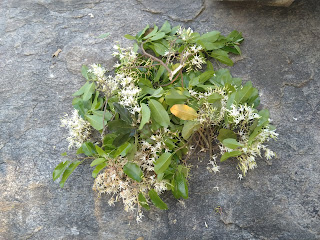Years ago, while I was volunteering for a wildlife
rescue centre, we received a call. Right
on a busy road in the north of Bangalore, a friend of ours – an amateur
wildlife enthusiast - was speaking to a man who stood with an odd looking
animal that he was looking to sell. It
had been captured from an agriculture field, tied up and then sold to this man.
“Should I buy this?” the friend wondered, as he
described this animal that he could not recognise (these were pre-Whatsapp days,
so people described things). Was buying
wildlife to save it ethical, he added?
It is a question that I still do not have an answer to, other than to be
a quintessential economist and say, “It depends….”
As he described the animal, my pulse rate
quickened. I had never seen a pangolin
before, but a photograph in Sanctuary was enough to make me fall in love with this
Master Oddity, an evolutionary quirk with an amalgam of features borrowed from
a plethora of species that is as endearing as it is, well, different. Once upon a time, Brittania had a delicious
little round biscuit called Britta, which was – this is a secret, so keep it to
the 1.7 billion folks on Facebook and don’t spread it around – made from the leftover
dough from all other biscuits that they made.
Pangolin is Nature’s Britta, with large scales of
keratin, no teeth, an odd looking snout that suggests a penchant for tunnelling,
a long sticky tongue and a decided appetite for ants and termites: one pangolin
can knock off 70 million in a year (Yes, somebody spent his life counting this. Does he need career guidance?).
I took a quick decision. “Say that you have just spoken to your cousin
who is a cop and is on his way here.” I have an old Gypsy, so it is a ruse that
works sometimes… “make him give it to you for free or, at least, haggle till we
reach.”
When we reached, the man had vanished, but our friend was
holding gingerly on to the pangolin. It was a large one, the snout was soft,
delicate and beautiful and the eyes melted the heart (we are suckers for these
things). And the good news was that it seemed to be unharmed.
At the rescue centre, where it was put into an
enclosure for a hour’s observation, it got to work right away, dug a hole and
entrenched itself with such firmness that it took two folks to pull it out to
be released in the wild.
So, why is Feb 19th World Pangolin Day?
It is world’s most trafficked animal, captured and
killed in ghastly ways to feed the fake medicines racket, ridiculous beliefs that
its body parts – the scales in particular - could cure illnesses. One statistic: in the four years between 2016
and 2019, the scales that were confiscated = 360,000 pangolins.
Ogden Nash – who better? – ends The
Pangolin Appendix, with this…
They're sought after because they are edible
But save them 'cuz they're pangolincredible!



